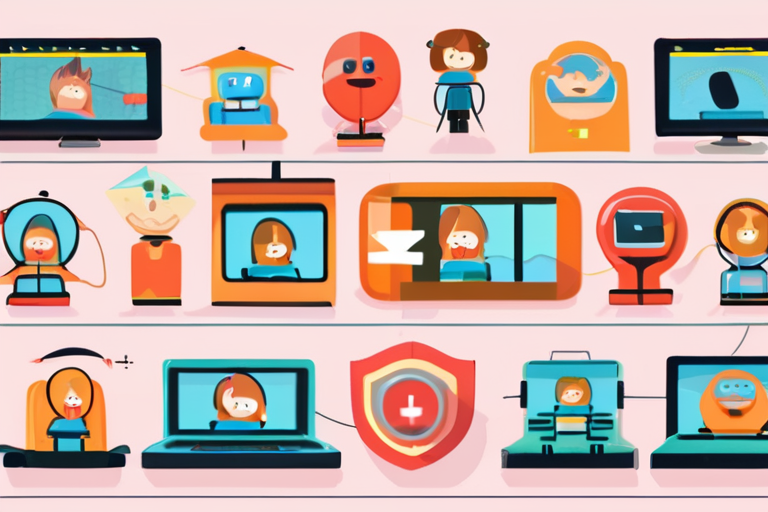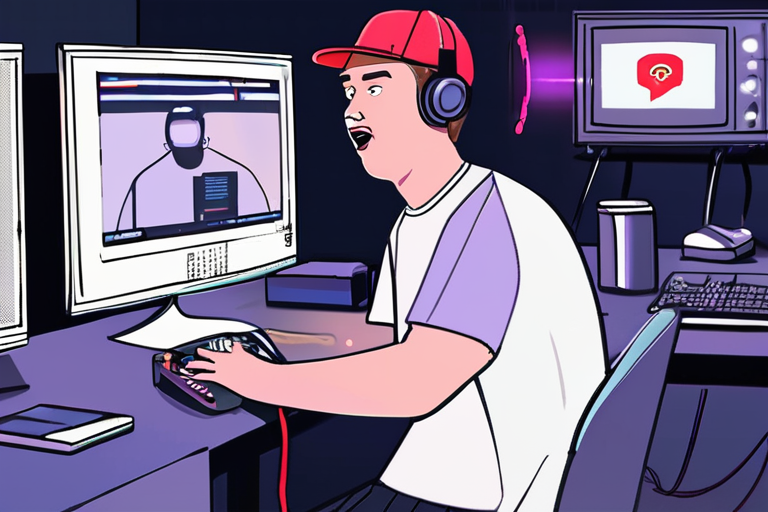Navigating YouTube for Kids: Experts Reveal the Best Way to Engage
In a rapidly changing media landscape, parents are left wondering how to guide their children through the vast array of content on YouTube. According to Dr. Jenny Radesky, a developmental and behavioral pediatrician at University of Michigan Medical School, children's media has undergone significant transformations since her own childhood in the 1980s.
In an episode of Explain It to Me, Vox's weekly call-in podcast, Radesky emphasized that parents need to be aware of the differences between old and new kids' content. "Children's media is very different from how it used to be," she said. "We have a lot more options now, but we also have a lot more complexity."
Radesky, who is also a director of the American Academy of Pediatrics Center of Excellence on Social Media and Youth Mental Health, has developed a coding scheme for kids' media quality. Her research highlights the importance of evaluating content based on its educational value, entertainment value, and potential impact on children's well-being.
To navigate YouTube effectively, Radesky recommends that parents use this coding scheme as a guide. "We've identified three key areas to focus on: learning, creativity, and social-emotional skills," she explained. "By prioritizing these areas, parents can help their kids make informed choices about what they watch."
The coding scheme categorizes content into four levels of quality:
Level 1: High-quality educational content that promotes learning and creativity
Level 2: Content with moderate educational value but may also have some entertainment value
Level 3: Low-quality content that is primarily entertaining but lacks educational value
Level 4: Content that is potentially harmful or has a negative impact on children's well-being
Radesky emphasized the importance of parents being aware of these levels and encouraging their kids to engage with high-quality content. "By doing so, we can help our children develop essential skills for success in life," she said.
The American Academy of Pediatrics recommends that children aged 2-5 years old spend no more than one hour per day watching screen media. However, Radesky notes that this guideline is not just about the amount of time spent watching screens but also about the type of content being consumed.
As YouTube continues to evolve and expand its offerings for kids, experts like Radesky are working to ensure that parents have the tools they need to make informed decisions about their children's media consumption. By understanding the coding scheme and prioritizing high-quality content, parents can help their kids navigate the vast array of options on YouTube.
Background:
The rise of YouTube has transformed the way children consume media. With over 2 billion monthly active users, the platform offers a vast array of content for kids, including educational videos, cartoons, and live streams. However, with great power comes great responsibility, and parents are left wondering how to guide their children through this complex landscape.
Additional Perspectives:
While Radesky's coding scheme provides a valuable framework for evaluating kids' media quality, some experts argue that it may not be enough to address the complexities of modern media consumption. "We need to think beyond just content quality and consider the broader impact of screen time on children's lives," said Dr. Jean Twenge, a psychologist who has written extensively on the effects of screen time on children.
Current Status and Next Developments:
As YouTube continues to expand its offerings for kids, experts like Radesky will remain at the forefront of efforts to ensure that parents have the tools they need to make informed decisions about their children's media consumption. With the development of new technologies and platforms, it is likely that the landscape of kids' media will continue to evolve rapidly. By staying informed and engaged with the latest research and developments, parents can help their kids navigate this complex and ever-changing world.
*Reporting by Vox.*



 Hoppi
Hoppi

 Hoppi
Hoppi

 Hoppi
Hoppi

 Hoppi
Hoppi

 Hoppi
Hoppi

 Hoppi
Hoppi











